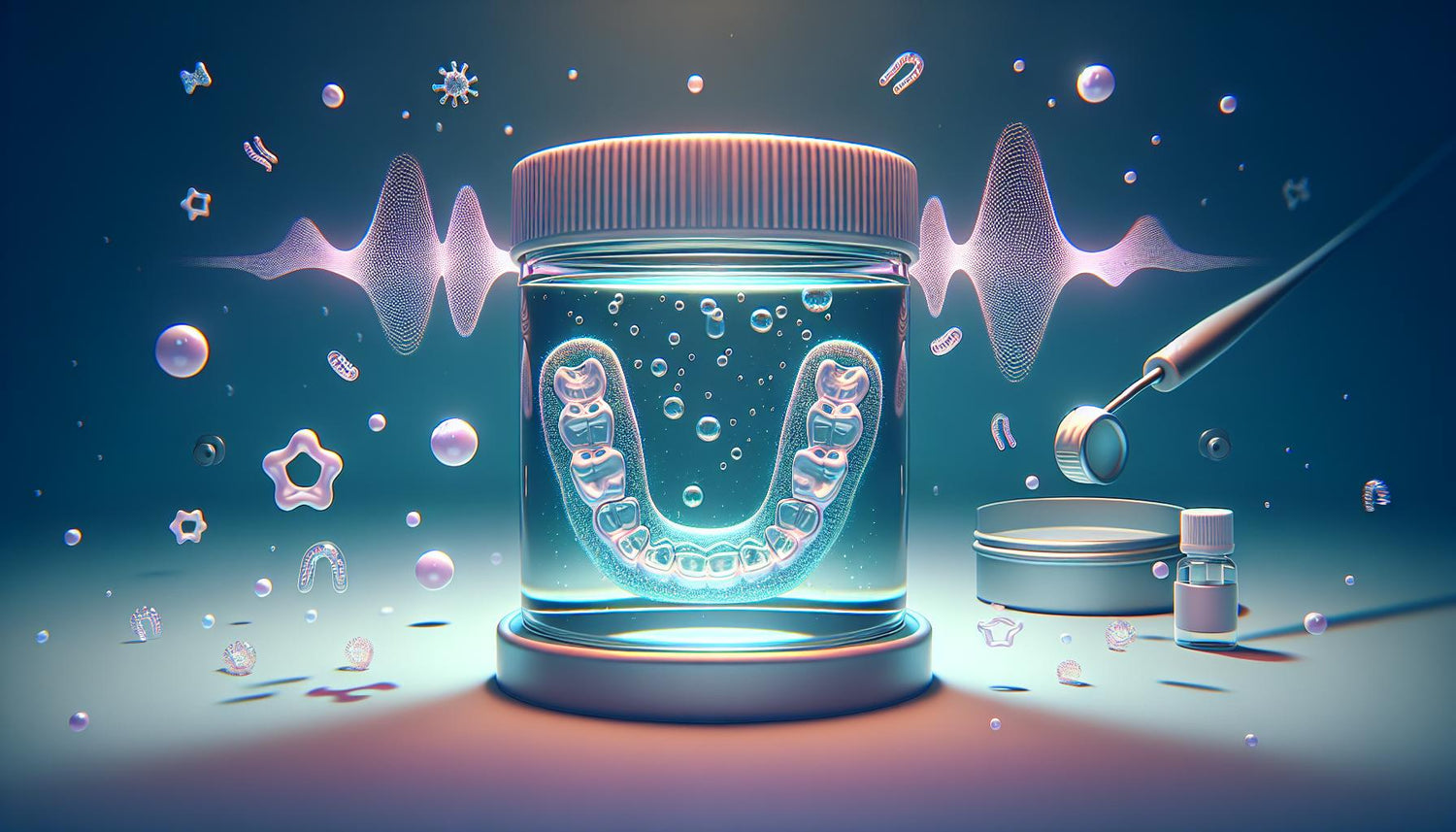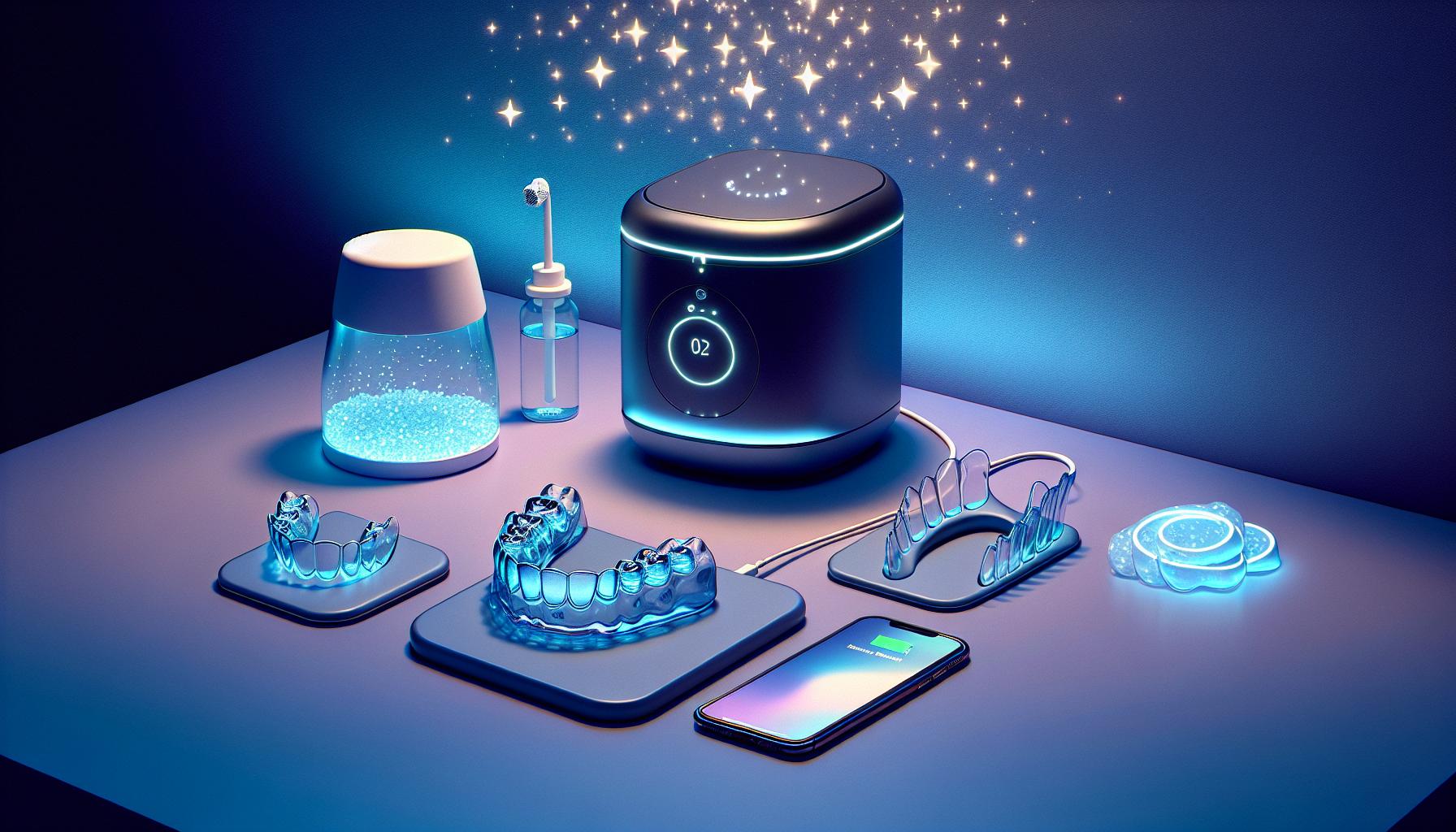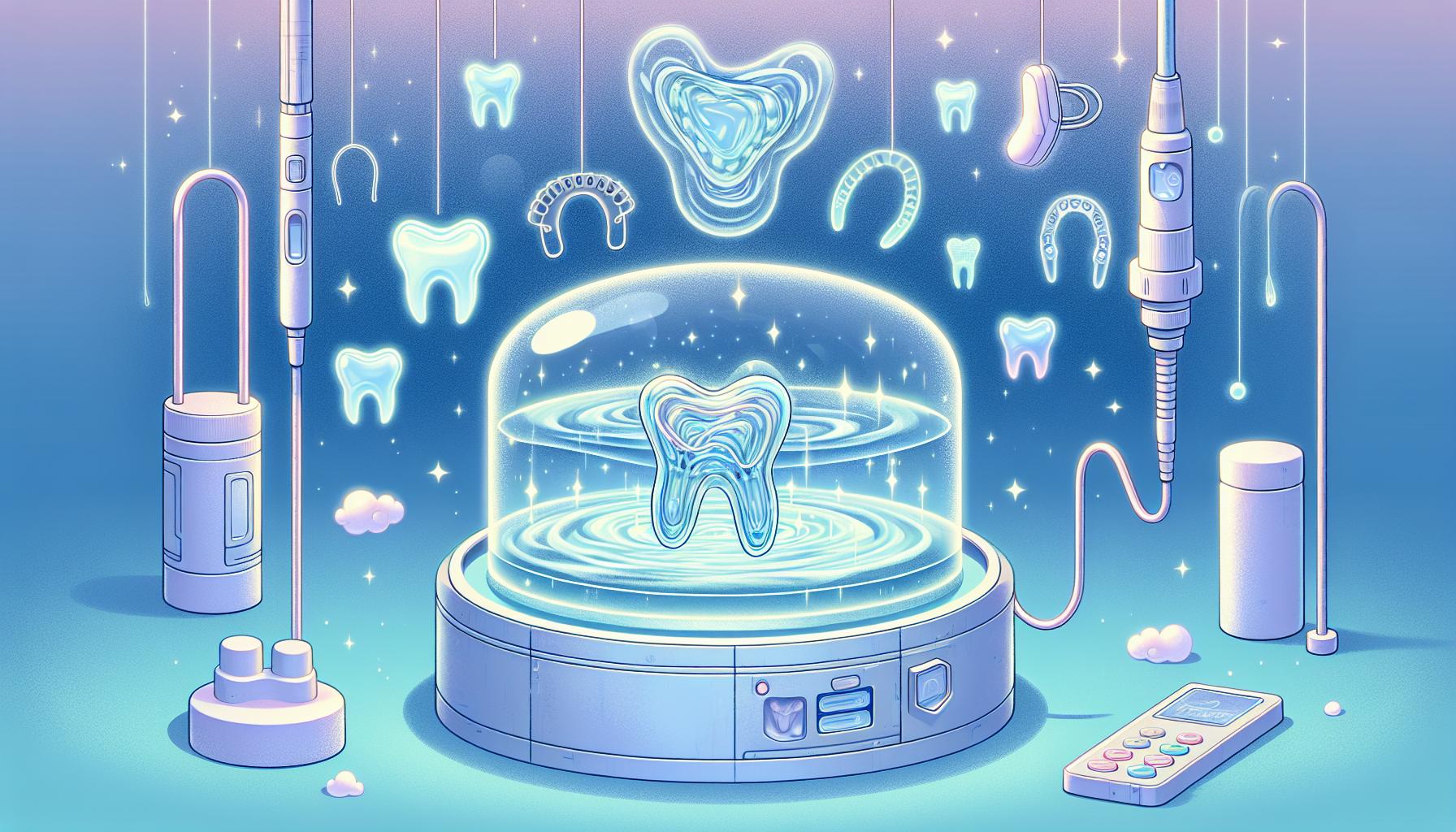Table of Contents
- Understanding the Source of Odors
- Common Causes of a Smelly Retainer
- Traditional Cleaning Methods: Pros and Cons
- Introducing Ultrasonic Cleaning Technology
- Choosing the Right Ultrasonic Retainer Cleaner
- Step-by-Step Guide to Using an Ultrasonic Cleaner
- Keeping Your Retainer Fresh: Maintenance Tips
- Beyond Retainers: Other Applications
- Conclusion
Understanding the Source of Odors
Your retainer is a small device that spends most of its life in your mouth—a warm, moist, and nutrient-rich environment. Over time, this creates an ideal breeding ground for bacteria, fungi, and plaque biofilm, all of which contribute to unpleasant smells. But what exactly is causing the odor?
Bacterial and Fungal Buildup
The human mouth contains billions of bacteria. When your retainer is worn daily, these bacteria cling to its surface, forming a biofilm. If not adequately removed through cleaning, the biofilm can mature and produce volatile sulfur compounds known for their foul odorous properties.
Food Particles and Residue
Even when you’re careful with your diet and oral hygiene, small food particles can get trapped in the crevices of your retainer. Over time, these particles decompose, providing additional fuel for bacteria and further exacerbating the odor issue.
Inadequate Cleaning Practices
Using ineffective cleaning methods or products that aren’t designed specifically for dental appliances can leave behind residues. Residual buildup can eventually lead to stubborn smells despite your best efforts to maintain hygiene.
Common Causes of a Smelly Retainer
Before diving into advanced cleaning methods, it’s important to consider common causes that may be at the root of your retainer odor:
Infrequent Cleaning
Simply not cleaning your retainer often enough is one of the main contributors to odor. It’s essential to establish a daily cleaning routine to prevent the accumulation of bacteria and debris.
Poor Cleaning Techniques
Sometimes, it isn’t about how frequently you clean, but rather how you clean. Rinsing your retainer without a thorough cleaning routine can leave microbial residues intact.
Environmental Exposure
Storing your retainer improperly can lead to additional bacteria colonizing its surface. Make sure your retainer resides in a clean, dry container that is well-ventilated between uses.
Lack of Specialized Cleaning Devices
Many people rely solely on basic brushing and rinsing without the assistance of specialized devices. While these methods have their place, they might not be sufficient for removing deeply embedded residues and biofilms. This is where advanced cleaning systems, like a retainer cleaner machine, prove invaluable.
Traditional Cleaning Methods: Pros and Cons
Common methods for cleaning retainers at home often include manual brushing, soaking in cleaning solutions, or using tablet-based cleaners. While these methods can be helpful, they do come with some caveats.
Manual Brushing
Brushing your retainer with a soft toothbrush and cleaning solution can physically remove some of the buildup. However, manual brushing may not reach all the crevices, potentially leaving behind harmful bacteria.
Soaking in Cleaning Solutions
Soaking your retainer in specially designed cleaning liquids can help break down and dissolve residual debris on the surface. It is important to use solutions that are specifically formulated for dental appliances. Custom cleaning formulations, though effective, need consistency and careful handling.
Tablet-Based Cleaners
Effervescent cleaning tablets have gained popularity because they help in dislodging debris with minimal manual effort. Unfortunately, these tablets might not always offer a deep cleaning solution, particularly for retaining areas with stubborn biofilm.
The Downside of Traditional Methods:
- Incomplete Cleaning: Traditional methods often leave behind some bacterial residues.
- Time Consuming: Some procedures require prolonged soaking and brushing.
- Chemical Residues: Depending on the products used, you may be left with traces of cleaning chemicals that eventually affect the smell of your retainer.
Drastic improvements in dental appliance hygiene have been made possible with the advent of ultrasonic technology.
Introducing Ultrasonic Cleaning Technology
Ultrasonic cleaning has been a pioneer in the field of cleaning delicate dental appliances. Utilizing high-frequency sound waves, these cleaners create microscopic bubbles that implode on the surface of your retainer, effectively dislodging stubborn particles and biofilms.
How Does Ultrasonic Cleaning Work?
The core principle behind ultrasonic cleaning is cavitation. When a retainer is immersed in a cleaning solution inside an ultrasonic cleaner, the device generates high-frequency sound waves. These waves create tiny bubbles that randomly form and collapse. The collapse produces high energy jets that penetrate hard-to-reach areas, removing debris and bacteria without the need for harsh chemicals.
Advantages Over Traditional Methods
- Deep Cleaning: The ultrasonic retainer cleaner is exceptionally effective at reaching microscopic crevices.
- Efficiency: The process is rapid and efficient—most devices clean your appliance in just a few minutes.
- Gentle Yet Effective: Ultrasonic cleaning does not require scrubbing, thus preserving the integrity of your retainer.
- Versatility: Many ultrasonic cleaners are designed to handle various dental appliances, including aligners and dentures.
As our reliance on technology grows, many have turned to the best ultrasonic retainer cleaner options for their daily dental hygiene routines.
Choosing the Right Ultrasonic Retainer Cleaner
With numerous products on the market, selecting the right device may seem overwhelming. What exactly should you look for when searching for an ultra sonic cleaner for retainer or the best retainer cleaner machine? Here are some critical considerations:
1. Cleaning Capacity and Frequency Range
Look for a device that allows you to adjust the frequency and duration of cleaning cycles. This flexibility ensures that you can target different types of debris without harming your appliance.
2. Safety Features
A high-quality retainer cleaner machine should have built-in features like auto shut-off and water level detection. These features not only enhance the cleaning process but also protect your dental appliance from potential damage.
3. Versatility
The best retainer cleaner machine should serve multiple purposes. For instance, it might double as an ultrasonic invisalign cleaner, making it useful even if you switch to clear aligners. Additionally, many devices are efficient for cleaning dentures with ultrasonic cleaner technology.
4. Ease of Use and Maintenance
Since you will be using the device regularly, opting for one that is easy to operate and clean will save you time and effort. Devices with simple controls allow you to integrate the cleaning process seamlessly into your daily routine.
5. Reliability and Reviews
Finally, ensure that the product has positive reviews and a solid reputation in both clinical and domestic settings. Users who have experienced significant improvement in their dental appliance hygiene will often share their success stories, guiding you toward the best ultrasonic retainer cleaner option.
Step-by-Step Guide to Using an Ultrasonic Cleaner
Achieving a consistently odor-free retainer is as simple as integrating an ultrasonic cleaning cycle into your routine. Follow these steps to make the most out of your cleaning device:
Step 1: Prepare the Cleaning Solution
Fill your ultrasonic cleaner's tank with a safe, recommended cleaning solution designed for dental appliances. Using a cleaning solution specifically formulated for retainer cleaning ensures that the ultrasonic waves aren’t dampened by impurities.
Step 2: Place Your Retainer Carefully
Gently place your retainer into the cleaning solution inside the ultrasonic cleaner. Ensure it is fully immersed and not overcrowded, allowing the ultrasonic waves to circulate freely around the appliance.
Step 3: Select the Appropriate Cleaning Cycle
Modern ultrasonic cleaners come with multiple cleaning cycles tailored to different tasks. Choose the cycle most appropriate for your retainer. Some advanced models even feature cycles specifically labeled for devices like clear aligners—ideal if you are looking for an ultrasonic invisalign cleaner.
Step 4: Initiate the Cleaning Process
Once you have configured your settings, start the ultrasonic cleaner. Within minutes, the device’s ultrasonic waves will create microscopic bubbles that reach every nook and cranny on your retainer. The process typically lasts just a few minutes, making it efficient and practical for busy lifestyles.
Step 5: Rinse and Store
After the cleaning cycle is complete, remove your retainer from the cleaner and rinse off any remaining cleaning solution. Pat your retainer dry with a clean towel, and store it appropriately in a well-ventilated container to avoid recontamination.
Adopting this ultrasonic cleaning method not only eliminates odors but also drastically reduces the risk of dental hygiene issues associated with bacteria buildup.
Keeping Your Retainer Fresh: Maintenance Tips
While an ultrasonic retainer cleaner provides a deep and thorough cleaning, daily maintenance is still key to a consistently fresh-smelling retainer. Here are additional tips to ensure your retainer remains odor-free:
Daily Rinsing
Make it a habit to rinse your retainer every time you remove it. This simple act can prevent food particles and bacteria from accumulating on the surface.
Regular Brushing
Along with periodic ultrasonic cleaning, gently brushing your retainer with a soft brush can remove surface debris. Ensure to rinse thoroughly after brushing.
Proper Storage
Store your retainer in a clean, dry container with adequate airflow to prevent the growth of mold and bacteria. A dedicated storage case keeps contaminants at bay until the next use.
Scheduled Deep Cleans
Incorporate a deep cleaning session with your retainer cleaner machine at least once a week. This routine ensures that even the most stubborn debris is removed.
Avoiding Potential Contaminants
Handle your retainer with clean hands, and ensure that your cleaning device remains free from buildup. Regularly replacing the cleaning solution as recommended by the manufacturer and maintaining the device itself will make a significant difference.
By following these maintenance tips, you can extend the lifespan of your dental appliance and enjoy optimal oral hygiene.
Beyond Retainers: Other Applications of Ultrasonic Cleaners
Ultrasonic cleaning technology is not just limited to retainers. It offers an effective cleaning solution for various dental appliances and even non-dental items.
Cleaning Dentures
For individuals wearing dentures, using an ultrasonic cleaner for cleaning dentures provides a thorough cleaning process that reaches small crevices and eliminates odors. This method is gentle on the material while effectively removing plaque and residues.
Clear Aligners and Invisalign
Those who use clear aligners or Invisalign systems can benefit from specialized devices like an ultrasonic invisalign cleaner. These devices are engineered to maintain the pristine condition of your aligners, ensuring that they remain free from odors and bacterial buildup.
Jewelry and Small Accessories
Outside of dentistry, ultrasonic cleaners are used to clean jewelry, eyeglasses, watches, and other small accessories. The principles remain the same—ultrasonic waves target and remove debris without the need for abrasive materials, preserving the integrity of your valued items.
Electronic Components and Medical Instruments
Industries such as electronics and healthcare also leverage ultrasonic cleaning for delicate components. The technology’s ability to effectively clean without causing damage makes it an important tool across multiple fields.
This versatility is a key reason why many dental professionals and households consider investing in the best retainer cleaner machine. The multiple benefits realized through ultrasonic cleaning extend far beyond the boundaries of dental hygiene.
Conclusion
A smelly retainer is more than just a minor inconvenience—it’s a sign that your oral hygiene routine needs a revamp. With the advent of ultrasonic cleaning technology, there is no longer a need to settle for inadequate cleaning methods that leave behind bacteria and residues.
By investing in an ultrasonic retainer cleaner or the best retainer cleaner machine, you can effortlessly integrate a deep-cleaning solution into your daily routine. Not only does this technology remove unwanted odors, but it also safeguards your overall oral health by eliminating harmful bacteria. Whether you’re in search of an ultra sonic cleaner for retainer, need an ultrasonic invisalign cleaner, or are interested in cleaning dentures with ultrasonic cleaner systems, the benefits are clear: enhanced cleaning efficacy, ease of use, and long-term cost savings.
Adopting advanced cleaning technologies ensures that your dental appliances remain not only odor-free but also structurally sound and hygienic. Say goodbye to the frustration of a smelly retainer and welcome the future of dental care—where convenience and efficiency meet cutting-edge scientific innovation.
In summary, understanding why your retainer smells and how to effectively combat it is the first step toward better oral hygiene. Constant exposure to a biofilm of bacteria and residues isn’t something to take lightly. Investing time and effort in proper daily maintenance, alongside periodic deep-cleaning sessions with an ultrasonic cleaning device, can significantly reduce the risks of dental issues down the road and even improve your overall quality of life.
Make the switch to ultrasonic cleaning today for a fresher, cleaner, and safer retainer. Embrace the benefits of technologies such as an ultrasonic retainer cleaner, ultra sonic cleaner for retainer, and the many retainer cleaner machines available on the market, and pave the way for better oral hygiene and confidence every day.
Taking charge of your retainer’s health is an investment in yourself. With your newfound knowledge and the right cleaning tools at hand, you’ll no longer have to endure the embarrassment or health risks associated with a smelly retainer. Instead, enjoy the efficacy and convenience that ultrasonic cleaning technology offers, and step confidently into a future of improved oral care.


